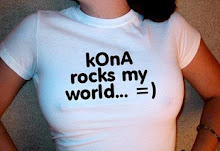
for those who know their military history, the raising of the american flag over mount suribachi on iwo jima is an iconic moment in marine corp history...one that has been immortalised in bronze in rosslyn, virginia near the arlington national cemetery, in memory to all the USMC personnel that have died in defense of their country since 1775...
tonight, mrs kona and i will be watching the 1st part of clint eastwood's 2-part take on one of the bloodiest battles in the whole of world war 2 on iwo jima (click HERE for the wiki entry)...the first is FLAGS OF OUR FATHERS which is from the american point of view and the second (to be released in a couple of months' time) is LETTERS FROM IWO JIMA which, as an obvious contrast, will be from the japanese point of view...
there are no rights and wrong point of views in the movies, so hearsay goes...just how the horrors of war afflict those who are involved...leaving unseen scars which cut deep into the soul...
several trailers of the movie can be found HERE
a little background into the movie...
Flags of Our Fathers is based on a New York Times Bestseller book (year 2000) of the same name and is about a man’s quest to learn more about his father, a medical corpsman in WWII at the Battle of Iwo Jima. More than 22,000 Japanese soldiers would die defending a patch of ground a third the size of Manhattan, while nearly 26,000 Americans fell taking it from them. The battle, the largest sea armada invasion ever assembled and the costliest war ever fought by the US Marines, was also a turning point in the war because control of the island of Iwo Jima (Japanese territory) allowed Allied forces to launch B-29 bomber raids into the heart of Japan with the eventual dropping of the Atomic Bomb that would end WWII.
The battle would produce one of World War II’s most enduring images: a photograph of five Marines and a Navy Corpsman raising an American flag on the top of Mount Suribachi, the island’s commanding high point.
The heart of the book centers around the tragic life stories of the six men who raised the flag that February day–one an Arizona Indian who would die following an alcohol-soaked brawl, another a Kentucky hillbilly, still another a Pennsylvania steel-mill worker–and who became reluctant heroes in the bargain.
Like the book, the movie is expected to focus on what happened to the men after the famous battle. The men in the photo–three were killed during the battle–were proclaimed heroes and flown home, to become reluctant symbols. For two of them, the adulation was shattering. Only John Bradley truly survived, displaying no copy of the famous photograph in his home, telling his son only: “The real heroes of Iwo Jima were the guys who didn’t come back."


No comments:
Post a Comment